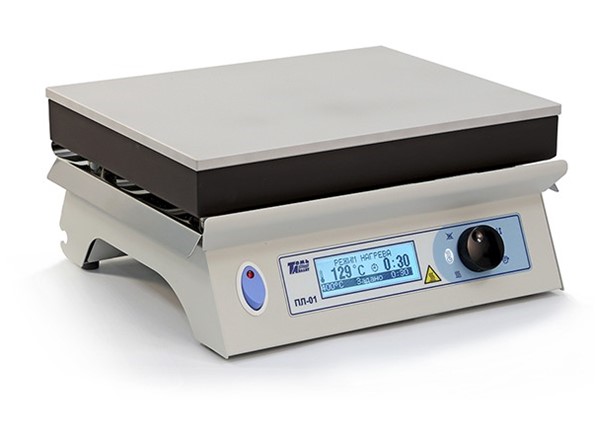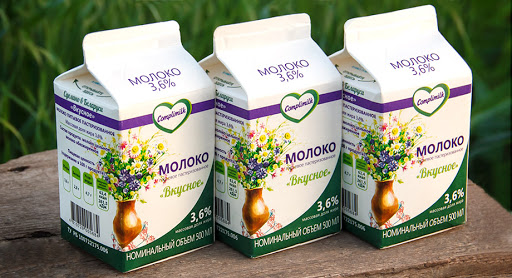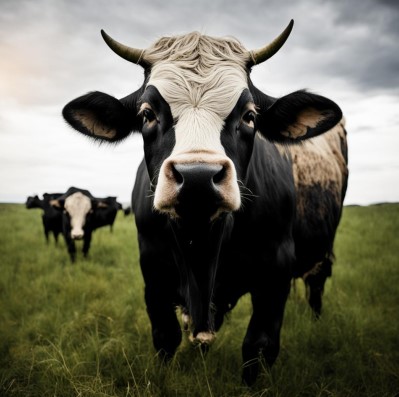"Just because you can't see it doesn't mean it doesn't exist." Liquidator from Vitebsk about irradiation and extinguishing fires after the Chernobyl nuclear power plant
"Было аномально жаркое лето, почти без дождей", - вспоминает события 37-летней давности витебчанин Владислав Прокошин. В 1986 году он как раз завершил учебу в Львовском пожарно-техническом училище и отправился по распределению в Минск. В белорусской столице молодой парень почти сразу услышал, что ему предстоит еще один переезд - в Гомельскую область. Говорит, они тогда знали одно: большое ЧП произошло на Чернобыльской АЭС, нужна была помощь в ликвидации его последствий. Взрыв на четвертом реакторе станции в ночь на 26 апреля стал самой масштабной аварией по числу привлеченных ликвидаторов и пострадавших из-за нее людей. Зараженными радиацией оказались территории многих стран, больше всего пострадали районы Беларуси, России и Украины. Владислав Прокошин работал у 30-километровой зоны отселения, из которой ранее эвакуировали всех местных жителей. Ему приходилось бывать и в самой зоне - там располагалась часть вверенного района. Случалось, за сутки машина так и не становилась в гараж. Подполковник в запасе поделился воспоминаниями с корреспондентами БЕЛТА.
One way 40 minutes. Chasing fires under radioactive dustLieutenant at the age of 19, Vladislav Prokoshin arrived in Khoiniki, Gomel region. The young professionally trained rescuer had practically no fear, he was faced with the following tasks: to put out fires, conduct inspections of state facilities, examine the private sector, and carry out civil defense activities, including disinfection of the territory. And it was such a Vitebsk resident who saw his mission.
"Выпускников-белорусов Львовского училища в 1986 году было 16 человек. Все мы были направлены в районы Гомельской области: Хойники, Брагин, Комарин и Наровлю. Попутно проводилась военизация подразделений профессиональной пожарной охраны в целях улучшения качества службы. До этого существовала пожарная охрана - обычные гражданские люди, которые имели опыт борьбы с огнем, пожарную технику. Также была пожарно-сторожевая служба, которая представляла собой пожарный автомобиль и водителя, который дежурит сутки на базе одного из колхозов, совхозов. И основным, наиболее боеспособным звеном являлась военизированная пожарная охрана в составе Министерства внутренних дел. А караульная служба (военизированная) представляла собой дежурные сутки и два дня отдыха. Профессиональная - сутки через трое", - вспоминает собеседник.
До крайней точки обслуживаемого района минимальное время составляло 40 минут. Чтобы быстрее добираться до нужной точки, водителей на службу брали только местных, которые хорошо знали дороги и могли уменьшить время прибытия. Во время тушения пожаров в сельской местности надежное плечо подставляла пожарно-сторожевая охрана.
"В основном мы занимались тушением пожаров. Лето стояло очень жаркое, практически без дождей, было много лесных, торфяных пожаров. Большое уважение вызывала лесопожарная охрана. Это вообще парни героические - когда его отправляют с лопатой и ранцевым огнетушителем, и он там сутки где-то один борется на болоте. С сотовой связью, как понимаете, в то время было не очень, - шутит Владислав Прокошин. - И все мы при первой возможности оказывали им помощь. Максимальное количество выездов (мой рекорд) - 26 раз. Мы попросту даже не заходили в гараж. Вот видим его, думаем: все на сегодня. А нет, снова вызов. Сложность была еще в том, что машина всегда должна быть заполнена водой и заправлена топливом. Заправлялись из водоемов или пожарных гидрантов".
Пожарные нередко буквально разрывались на несколько адресов. Владиславу Прокошину и его коллегам приходилось тушить одновременно несколько пожаров в разных местах. Здесь главное было приехать и тем самым успокоить людей, которые переживали за свою жизнь и имущество. "Военизация приносила результаты. Потихоньку ребята сменялись, приезжали новые. Не забывали оказывать помощь государству, в частности собирать урожай. В силу профессии я бывал на многих предприятиях. Были интересные. Запомнилась линия, где в банки закатывают картошку. Джемы видел, был цех мармелада, сухое молоко, масло, но чтобы закатывали картошку в банку - это видел единственный раз в жизни", - делится он.
The young lieutenant, like many of his colleagues, had to extinguish fires in the 30-kilometer resettlement zone surrounded by "thorns". Part of the area was behind the wire. The time spent in the contaminated area was recorded and entered into special cards at the checkpoint. From the bus station in Khoiniki to the zone is very close - it was visible to the naked eye.
The interlocutor talks about the everyday life of firefighters 30 km from the disaster and closer without unnecessary emotions. Surely then they overflowed, and hard and extremely dangerous workfor days on end, in addition to exposure to radiation, it gave a strong voltage. But Vladislav Prokoshin does not touch on these topics, he says, this is the work. "We were taught professionally for three years. We were not ordinary people who got somewhere. Our diploma read: "fire technician" - secondary education, "engineer" - higher education. In addition to mathematics, physics, technical mechanics, we studied water supply, electricity supply and other special disciplines. We are officers. This is our job. Now I am embarrassed that young people somehow treat their lives for fun. Somehow they live in a computer. They must clearly understand that this is their homeland, this is their land, and their task is to make things good in the Motherland and the land.
"Special attention - clothes and shoes." Where did the radiation accumulate?“When you work, the main thing is to save people. Things and equipment were tracked. For example, they traveled around the zone, walked around, then measured the car with a dosimeter - the arrow reacted. If the dose was exceeded, the car was taken out of the calculation and sent to specially designated places. the car, as well as shoes, were washed at special points. And, as you understand, it was easier to wash off slippery surfaces. For safety reasons, uniforms were constantly changed, on average once a week," the liquidator describes.
Missing their native lands, local residents who had housing, vegetable gardens, farms and animals in the resettlement zone “crawled home like partisans”, not realizing that they were at risk of getting a good dose of radiation. “After all, people were evacuated for a reason, they were forced to leave animals,” recalls Vladislav Prokoshin. “It’s all about the dose and limiting its penetration into the body, because you practically don’t feel anything. Particular attention is given to clothes and shoes. After all, radiation is collected on the HEAD , in the armpits, on the throat, in the groin and on the ankles under the trousers, therefore boots must always be worn.
"Knew where he was going." About the duty of the rescuerThe disaster at the Chernobyl nuclear power plant brought grief to the best areas of the Gomel region, Vladislav Prokoshin notes. These were surprisingly fertile lands, giving an excellent harvest. “And the best people lived on them: extremely industrious, hard-working and, most importantly, loving their land,” he explains. “We never had any questions about a fire. troubles that worsen our general living situation and state of HEALTH. How many lives have taken away - it can’t even be counted. After all, radiation is a delayed thing in relation to health. The longer the period, the worse the accounting. The worse the accounting, the worse the statistics and it just becomes more difficult keep track of these options. If you don't see exposure, it doesn't mean it's not there."
The business trip of the young rescuer to the Gomel region lasted almost three years intermittently, until April 1989. While serving in Khoiniki, the liquidators celebrated holidays and held tournaments. “We tried to maintain a full life: we organized competitions, passed tests, and conducted physical training, classes. We also had football matches, I had a chance to try on the Santa Claus costume twice,” he shares.
After returning home, having worked a little as the head of the guard in the regional Ministry of Emergency Situations , the Vitebsk resident received an order to study in Moscow at the Higher Engineering Fire-Technical School of the USSR Ministry of Internal Affairs. “There I had the last allied enrollment,” the interlocutor explains. “I entered under the Union, and the diploma was already awarded in RUSSIA.” Having received a higher education, Vladislav Prokoshin again came to Vitebsk. Today he is already a lieutenant colonel in the reserve. He raised his son, who also considers it his calling to save people and became a DOCTOR.
Vladislav Adolfovich now shares his experience with young rescuers during holidays and meetings. Literally frozen, they listen to the hard times of the liquidators after the disaster at the plant's reactor. Our hero speaks about this with humor - without him, there is nowhere in this profession. At a recent such meeting, a lieutenant colonel in the reserve was awarded a badge of distinction "20 years of the BOO of veterans of bodies and units for emergency situations." Looking back, the Vitebsk resident sums up: “Even at school, I decided on a male profession. And I knew where I was going, who I would be. And I knew that I would have tasks. The main thing was to fulfill them qualitatively and not lose people.”
Evgeniya ARKHIPOVA,
Photo by Alexander KHITROV,
BELTA.




















































